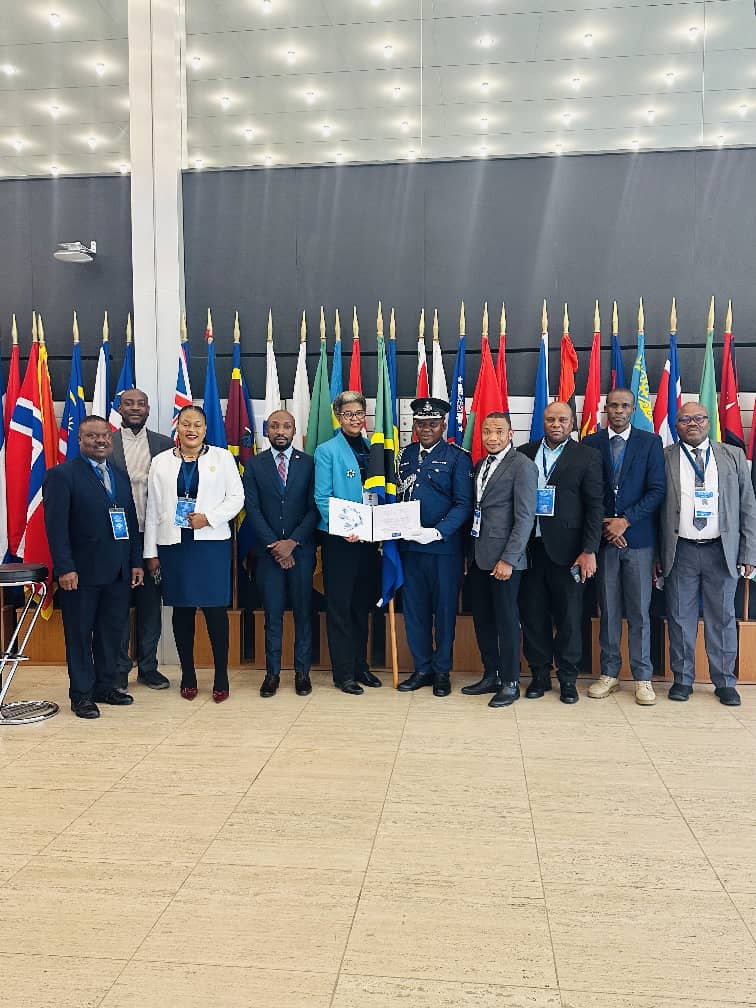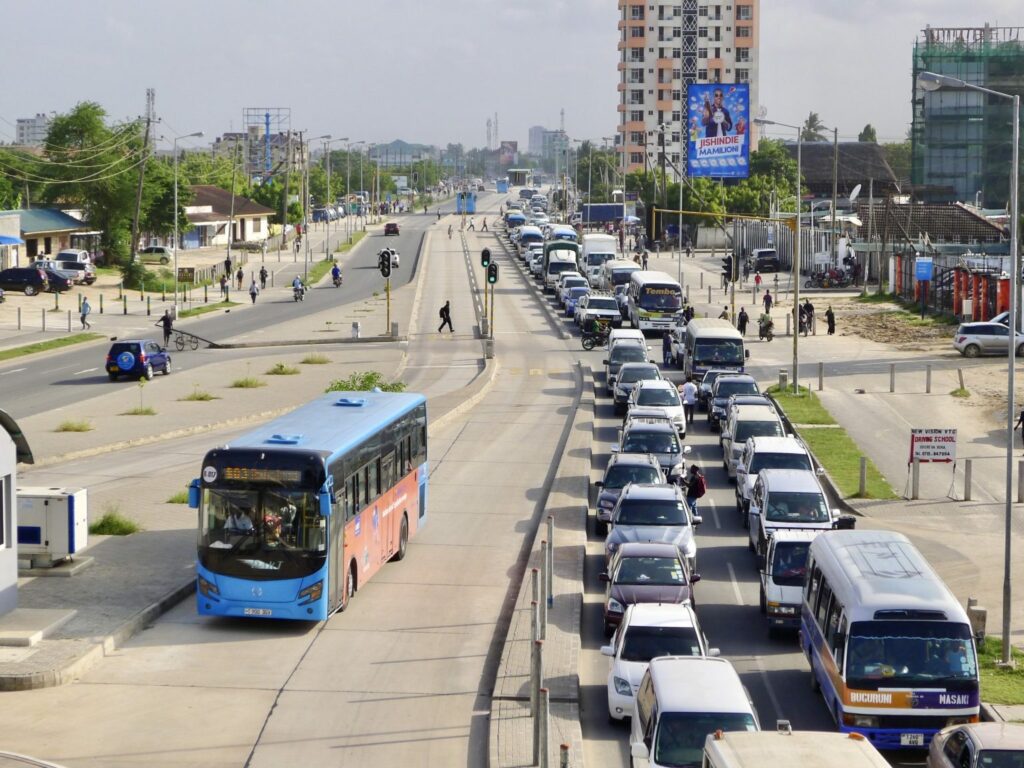
Tuesday, 18th February 2025.

Por inAfrika Reporter
Traffic congestion has long been a pressing issue in Tanzania’s growing urban centers, affecting daily commutes, economic productivity, and public health. Recognizing the severity of the situation, the government has announced a strategic plan to combat congestion in five cities and three towns. The initiative includes expanding road infrastructure, improving transportation systems, and constructing alternative routes to ease movement in these high-traffic areas. This effort is crucial not only for Tanzania but also for the broader East African region, where economic integration and trade depend on efficient transportation networks.
Traffic congestion in Tanzania has become increasingly severe, particularly during peak morning and evening hours when people travel to and from work. Major cities and growing towns are experiencing significant delays due to the increasing number of vehicles on the road. This congestion has widespread consequences, affecting health, economic productivity, and social interactions.
From a health perspective, prolonged exposure to traffic congestion is linked to mental health issues, asthma, respiratory diseases, cardiovascular conditions, and allergic reactions caused by vehicular emissions. The inhalation of polluted air from fuel combustion is a major concern for commuters and drivers alike, leading to an increase in respiratory illnesses due to prolonged exposure to poor air quality.
A recent study in Addis Ababa, Ethiopia, estimated that the economic cost of traffic congestion ranges between 696.5 million and 806.3 million Birr annually. While specific figures for Tanzania are unavailable, similar urban settings likely experience comparable economic losses due to traffic delays and fuel inefficiencies.
Economically, time lost in traffic translates into reduced productivity. Social experts argue that extended hours spent in congestion result in lost opportunities for income generation. Employees, business owners, and students often find themselves running late for work, meetings, and classes, forcing them to make excuses or even face disciplinary action for lateness. In some cases, these delays strain professional relationships, causing disruptions in business and work environments.
The issue of traffic congestion is not unique to Tanzania. Across East Africa, growing urbanization and increasing vehicle numbers have led to similar challenges in cities such as Nairobi, Kampala, and Kigali. With regional trade and movement playing a vital role in economic growth, addressing congestion in Tanzania is a step towards ensuring smoother transit within the East African Community (EAC).
To address these concerns, the Tanzania National Roads Agency (TANROADS) held a press conference in Dodoma, unveiling various infrastructure projects aimed at tackling congestion in key urban areas. The strategic plan targets the cities of Dar es Salaam, Mwanza, Arusha, Dodoma, and Mbeya, along with the towns of Moshi (Kilimanjaro), Iringa Municipality (Iringa), and Songea (Ruvuma). Notably, Tanga City has not been included in this phase of the initiative.
During her New Year’s address last year, President Samia Suluhu Hassan acknowledged the worsening congestion problem and assured Tanzanians that the government would prioritize strategic projects to reduce traffic jams in major cities.
The East African region stands to benefit significantly from these improvements. Dar es Salaam, a major trade hub, handles substantial import and export traffic for landlocked countries such as Rwanda, Burundi, and Uganda. Improved road infrastructure will enhance the efficiency of regional supply chains, reducing transit times and transportation costs for businesses operating across East Africa.
The government’s plan includes several road infrastructure projects aimed at increasing road capacity and improving transportation efficiency. A significant component of this plan is the expansion of the Bus Rapid Transit (BRT) system, which will alleviate congestion by providing an efficient and reliable public transport alternative. The BRT expansion consists of several phases:
To further ease congestion, the government has also completed several flyover (overpass) projects in Dar es Salaam, while planning additional road expansions. One key project involves widening the Kimara-Gerezani road by adding an extra lane on each side to accommodate increased traffic. Additionally, Phase Five of the BRT project, covering 25.4 km from Ubungo to the Port and Segerea – Tabata – Kigogo, is in its final procurement stage.
Efficient transportation infrastructure in Tanzania is crucial for the East African Community (EAC). Dar es Salaam serves as a major trade hub, handling significant import and export traffic for landlocked countries like Rwanda, Burundi, and Uganda. Improved road networks will enhance regional supply chains, reducing transit times and transportation costs.
However, port congestion remains a challenge. Data from January 2025 indicates that the Port of Dar es Salaam experienced congestion due to an increase in the number of vessels, particularly in dry bulk and Ro/Ro categories. Addressing both road and port congestion is essential for optimizing trade efficiency in the region.
Additionally, studies suggest that increasing the average speed of public transport by 0.5 km/h and private cars by 1 km/h can reduce travel times and operational expenses by 0.1% of GDP.
The government’s comprehensive infrastructure initiative aims to enhance urban mobility, reduce traffic congestion, and boost economic productivity in Tanzania’s rapidly growing cities and towns. These improvements will not only benefit Tanzanians but also create ripple effects across East Africa’s trade and logistics network. As Tanzania plays a crucial role in the region’s economy, improved transport infrastructure will help businesses operate more efficiently, facilitate cross-border trade, and improve the overall ease of doing business.
With significant progress already made and more projects underway, these developments are expected to transform Tanzania’s urban transportation landscape, making it more efficient and sustainable for future generations. This initiative aligns with the broader goal of ensuring a well-connected, economically vibrant East African Community, where transport bottlenecks no longer hinder growth and development.


